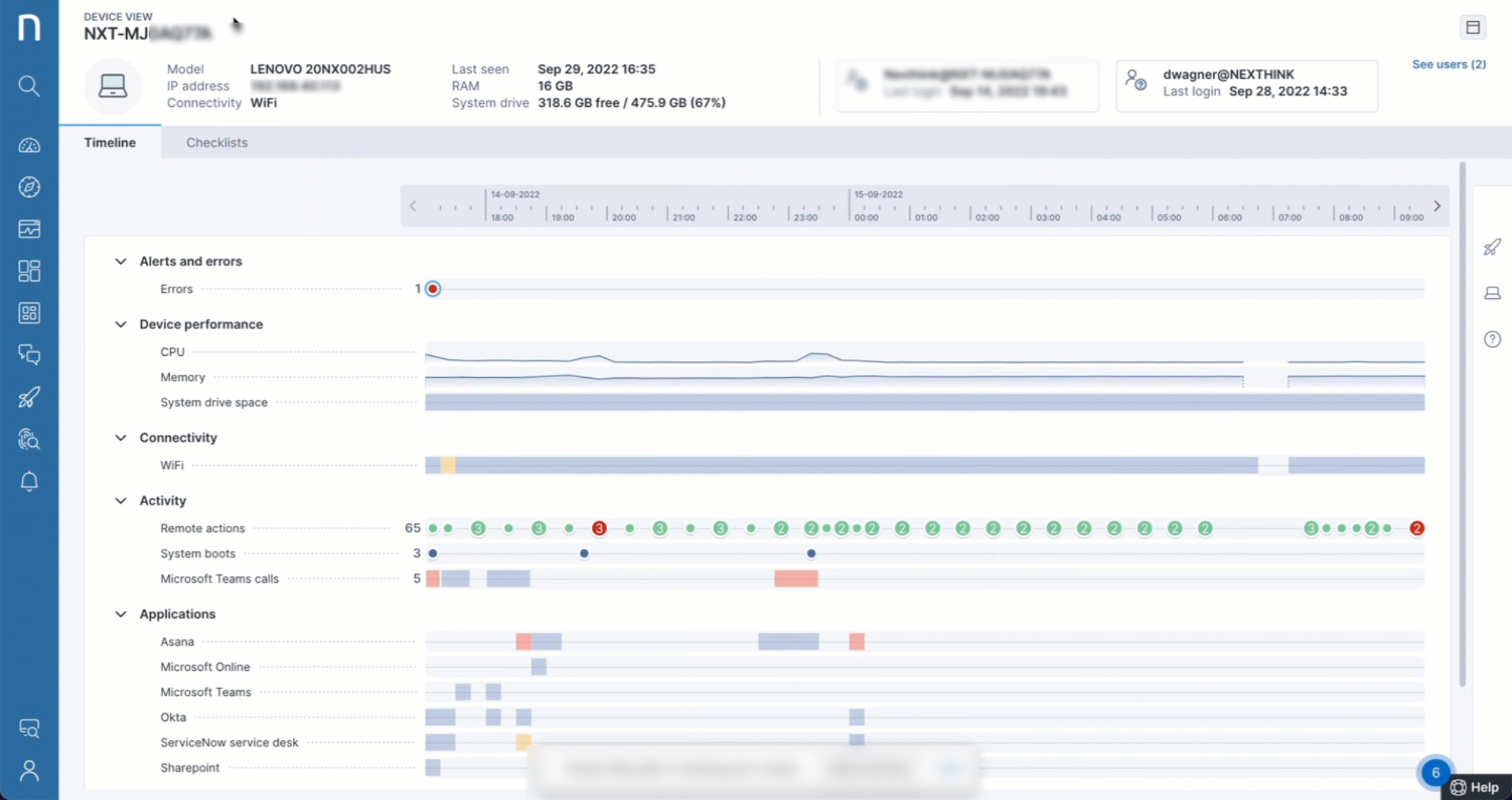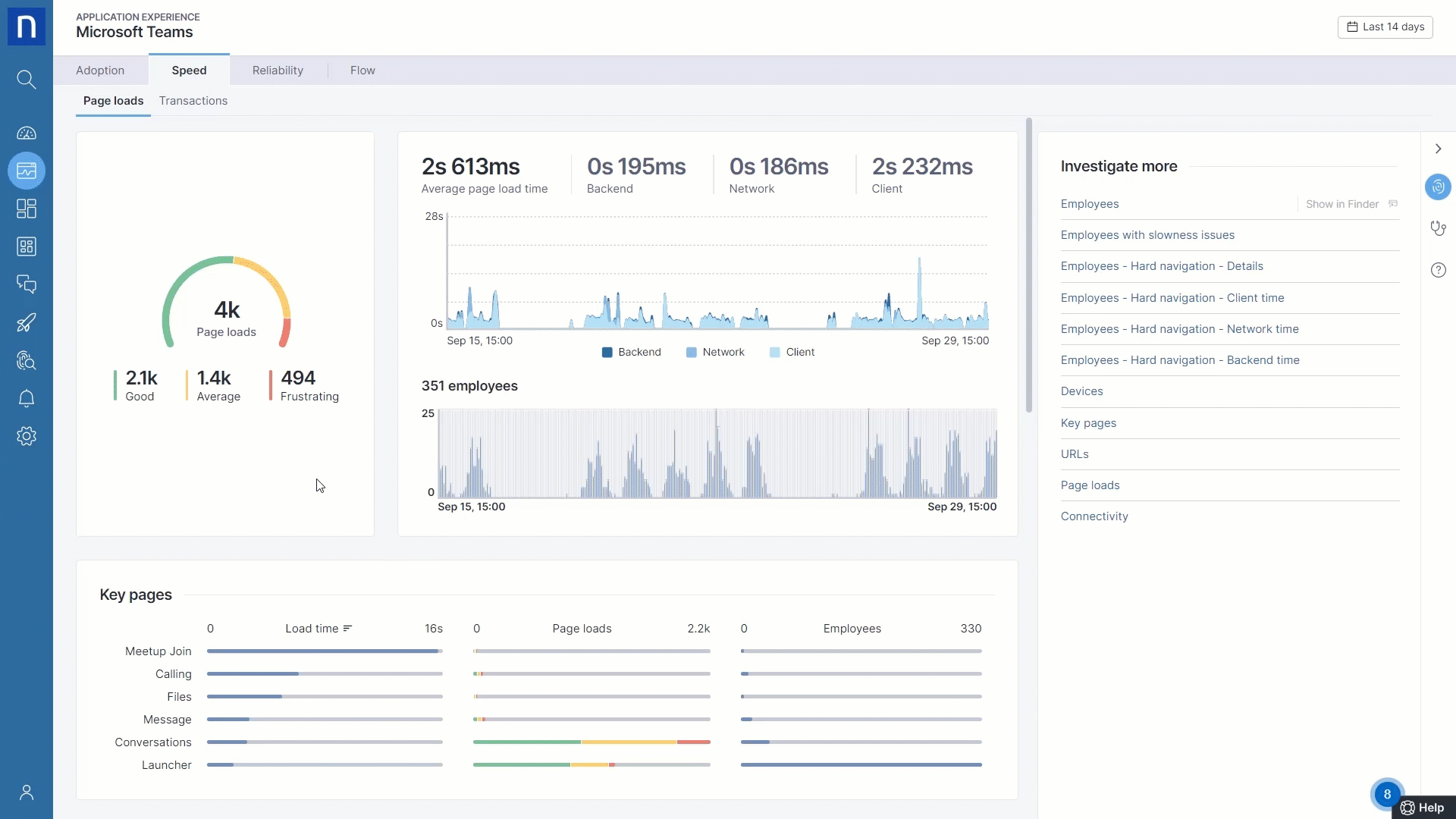Microsoft Teams Lagging? How We Fixed the Issue in 10 Minutes.
When was the last time you had to ask someone to repeat something during an MS Teams call, or had to restart the app, just because the call quality dropped? Sounds familiar?
Frustrating, isn’t it?
Now imagine hundreds, if not thousands, of employees feeling this frustration at work. Think of the time lost for them, for the organization, and—more importantly—for those who’ll need to fix it.
As EUC professionals, we cannot let that happen. Especially with the new “work from anywhere” working trend.
But, to do that, you need to know if, when, and it’s happening. And that’s easier said than done.
Here is a great example of this problem happening here, at Nexthink. Lucky for us, we’re known for “drinking our own champagne”, so the problem was solved in a matter of minutes.
The situation
It all started with a ticket.
Dave, A Nexthink employee, reached out about a serious degradation in his MS Teams call quality. In every MS Teams call he joined, he would experience audio/video lag and jitter, drastically slow internet speed (300-400MB/sec down to less than 100KB), time-out errors, and connectivity outages, forcing him to reboot his device to get it back on the network. Understandably, Dave was frustrated at his inability to collaborate effectively with his peers.
{Microsoft Teams crashing? Read how this Investment Company’s team fixed the issue in minutes}
Dave’s job requires him to spend a lot of time on MS Teams calls, so the ticket itself was marked as “urgent” since it was a real productivity blocker for him. The service desk prioritized it to fix it as quickly as possible.
A 3-Step Approach to Find, Diagnose, and Fix the Lag Issue in Under 10 Minutes
Step 1: Instant issue detection on device timeline
The support engineer’s first instinct was to open the Device View in Nexthink, which enabled him to go endpoint-deep and retrieve a chronological view of device activity to precisely review and understand everything that happened on this device. This also includes telemetry from 3rd party applications like MS Teams and how it impacted Dave’s device performance and user experience.
Immediately, a pattern unfolded clearly highlighted on the device’s timeline. Every time Dave experienced a network issue, multiple events were happening simultaneously. Firstly, the Teams Call quality dropped significantly and, secondly, an executable called DAX3API.exe would crash. On the timeline, it was obvious that his crash created a domino effect that led to Dave’s poor experience.

Step 2: Accelerated diagnosis with native search and investigations
DAX3API.exe is a Dolby Atmos Component installed on all devices with Dolby Atmos Audio Support to render audio on an external device. This clearly explains the component crashing during its activation when joining a Teams meeting with a headset.
Voila, the engineer now understood what was causing Dave a headache. However, further diagnosis was required to understand the scope and scale of the crash.
So, the engineer triggered an enterprise-wide native search and investigation to retrieve key details about this binary across every device, such as:
- the version of the executable present on the device and if it was up to date
- the different versions of the executable used across all other devices
- if any other device with the same version was experiencing the same issue.
The Engineer instantly saw that Dave was running the latest version of the executable and none of the other 142 users running the same version of the executable had any issues.
This ruled out the possibility of a versioning issue.
So, the support engineer triggered the “Get Application Crash Details” Remote Action to retrieve additional details about the executable crash.
And here it was, the exact context around the issue: the executable was corrupted!
Step 3: Remediate instantly with automated fixes
Once the root cause was understood, the fix was simple: reinstalling Dolby Atmos and updating of the audio drivers. The Engineer triggered Remote Actions that automatically deployed the fix without having to schedule any remote sessions with the user.
Problem Solved
The problem was resolved in less than 10 minutes.
Thanks to the agents installed on each device and the depth and breadth of real-time visibility Nexthink provides, no other tools in the market could have resolved this issue that quickly and effectively.
Indeed, the same set of Nexthink features empowering our Customers’ IT teams with —across every endpoint, computing environment, application, and network–are also leveraged by Nexthink’s own IT teams to resolve IT issues and improve the employee experience.
Without the relationships and correlations between multiple components Nexthink provides, the support egineer would not have had a defined starting point to diagnose the issue. The resolution time would have been much longer wasting both IT and Dave’s time from unnecessary remote sessions.
Use AI-Powered Root-Cause Analysis to Diagnose Your Collaboration-Related Issues
Increase your endpoint visibility. Schedule a Nexthink Demo Today.
Related posts:
- The Ultimate List of Digital Employee Experience Job Titles
- Powering the Digital Employee Experience for Remote Workers
- The 7 Pillars of DEX Visibility: How Nexthink provides a complete picture of your Digital Workplace
- 7 Remote Work Problems IT Solved With Nexthink
